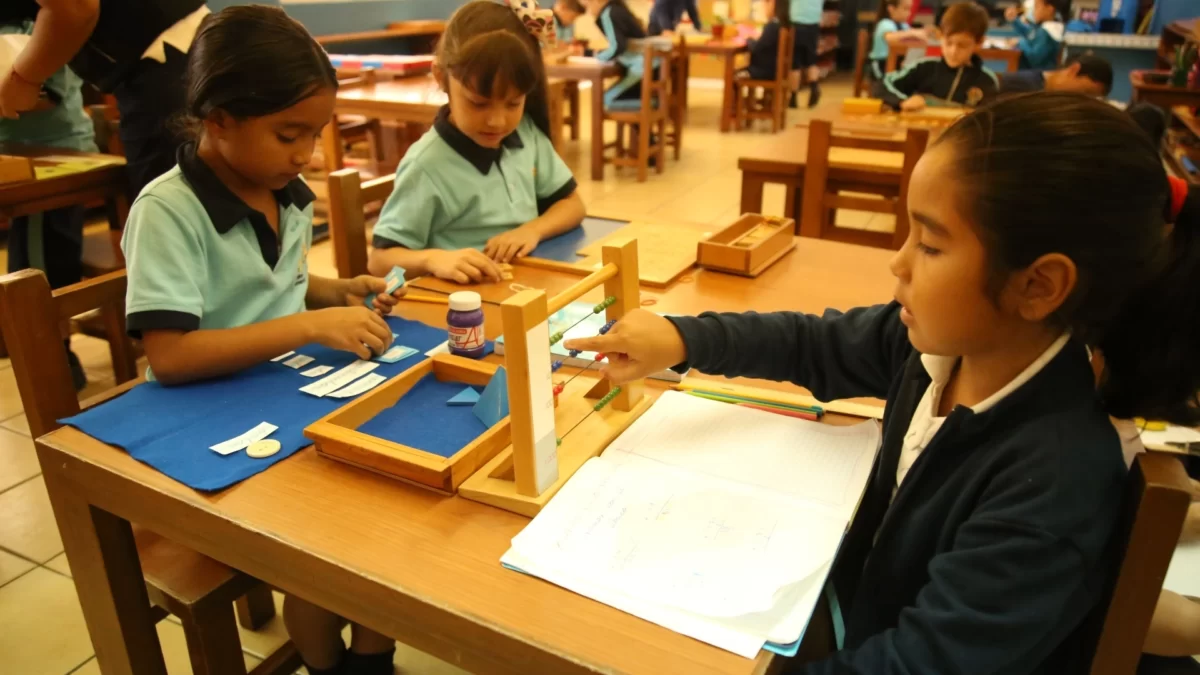“The school is not a place where the teacher transmits knowledge, but a place where the intelligence and the psychic part of the child will be developed through free work, with specialized didactic material”. –Maria Montessori
Dr. María Montessori believed that children learned mainly through touch, which led her to propose an educational model in which the learning process invited them to learn by themselves and at the moment in which they felt ready to do so. do it.
That is why the Montessori materials were specially designed so that learning was experimental, paying particular attention to the interests that children present according to their stage of development and with the ideology that the manipulation of concrete objects will help them in the development of knowledge and Abstract thinking.
Materials that awaken the senses of children
María Montessori managed with her materials to awaken each of the children's senses, thus facilitating their learning process thanks to the stimulation generated in the different regions of the brain.
Elements such as weight, sound, and texture make it much easier to understand various topics, since they allow them to materialize things that in theory would only be concepts, for example: short, long, heavy, light, colors, textures, etc.
And they are made with a special weight and size so that children can handle them independently and without problems; They are also harmonious to look at with the aim of arousing interest in working and experimenting with them.
Accompaniment in different stages and areas of learning
All Montessori materials were designed to accompany boys and girls in their different stages of learning; from the first sensory experiences, through learning to read, write and the first arithmetic operations, to more complex concepts such as arithmetic, geometry and logical development.

They are also a wonderful source of support for the understanding of botany, zoology, astronomy, history and geography.
Division of Montessori materials by subject
- Material of practical life: They are the first materials with which children interact. They seek to encourage their independent life from the earliest stages of learning and are based on daily activities with which the child feels safe imitating the adult, generating a sense of belonging to the group.
- Sensory material: Focused on the development and improvement of the senses used to explore the world and learn about what surrounds them. The 5 main senses are stimulated (sight, touch, hearing, taste and smell); They also exercise a sense introduced by Dr. Montessori called "Stereognostic". This "sixth sense" seeks to use the sense of touch by omitting that of sight, in order to stimulate different sensory perceptions.
- Language material: Designed to begin to engage in oral communication, prepare it for the reading process and later the writing process. It also encourages communication between peers to start creating social relationships.
- Mathematics material: The correct learning and development of mathematical language allows us to understand the laws of nature. They build the foundations of mathematical knowledge with concrete experiences, starting from the simple and slowly increasing the complexity of the exercises.
Montessori materials were designed to strengthen the learning process of children, but also encourage them to develop their independence, creativity, concentration and order; qualities that if cultivated from a young age will accompany them throughout their lives.
Source: Montessori Lancaster. Original article
